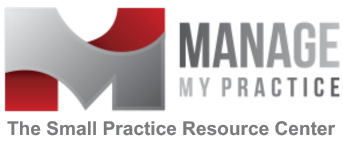The healthcare industry has gone through a lot of change very quickly in the past five years, with still more to come. Independent practices and smaller physician groups have a lot of reason to “seek higher ground” in mergers, partnerships, and buyouts by larger groups and hospitals that have the resources to better deal with lower reimbursement and increasing regulation. Still, just as we are seeing the crest of the wave of physicians selling their practices to hospitals, we are also beginning to see a lot of the reverse trend – physicians leaving hospital employment and starting their own practices.
We have a number of new solo physician practices among our clients and each of these practices can make the numbers work for the three reasons outlined below. Their new practices may look much different from the practices they once had, but they now can bypass the crushing financial burden of start-up costs and find ways to cut expensive overhead. As hospitals ratchet down physician salaries and present new hoops from them to jump through, more and more physicians will look to these new tools for independence and financial viability.
Free EMR
In 2008 I was living in Seattle and I attended a conference at Microsoft in Redmond, Washington. It was there that I met Dr. Bill Crounse, the Senior Director of Worldwide Health for Microsoft. He was kind enough to sit down for a few minutes and talk to me about the future of physician practices. He told me something at the time that I didn’t really understand. He said, “Something is about to happen that will be game changer for physicians.” At the time I didn’t understand what he meant, but today I believe he was hinting of the pending launch of Practice Fusion, the first free electronic medical record (EMR.)
The free EMR has indeed been a game changer for physicians. The ability to e-prescribe and report PQRS to avoid Medicare financial penalties and to collect the EHR Stimulus money (aka Meaningful Use) without the typical $25 -$30K outlay per physician has been a boon for many practices. How can an EMR be free? With advertising and the agreement that they blind and sell your data to third parties. (Have EMR companies been doing this all along and not telling you? A topic for another post.)
Physicians still need a billing system to run their businesses, but today software vendors are bundling billing packages with practice management and/or EMR software. For anywhere from 2.9% – 5% of net revenue, physicians can use the software and receive insurance billing services as a package. The two largest vendors providing this service are Athena and eClinical Works.
Social Media
The second reason physicians can start a private practice is the replacement of traditional (quite expensive) traditional marketing with social media. For a fraction of the cost of a direct mail campaign, a physician can use social media to establish a digital presence via a website, blog, YouTube and Facebook. These mediums are not free, but they are long tail, meaning that they will continue to drive patients to the practice long after a direct mail postcard has been thrown in the trash.
New Practice Models
Physicians and other care providers have a choice of self-employed practice models today. Here are a few choices they have:
- Concierge – concierge can mean different things to different people, but I am using it to describe a practice that accepts insurance and also requires an additional fee from all patients on top of insurance payments.
- Medicare Subscription – similar to concierge, but applies the additional fee for Medicare patients only to pay for additional services not covered by Medicare, particularly an annual physical examination.
- Direct Pay – this is a primary care model where patients pay a monthly fee each month that covers unlimited primary care (sick and well visits) and some in-house laboratory services. This model also includes direct-contracting with employers.
- Telemedicine – gaining popularity for more than just rural specialty care, telemedicine is seeing patients via a secure video connection.
- House Calls – this model is coming back as a pure practice model because physicians and other care providers do not have to invest in a brick and mortar office. Coupled with the ability to accept payments via their smartphones and the influx of baby boomers, this model is gaining popularity quickly.
- Nursing Home – Another “rounding” type of practice like the House Call practice, physicians spend 100% of their time in nursing homes seeing patients.
- On Call Specialty Practice – specialty physicians, typically surgeons, see patients pre and post-surgery in the office of the referring physician and have no brick and mortar office.
- Cash Practice – this is a 100% cash model with no insurance payments accepted. Typically, physicians will provide patients with what they need to be reimbursed from their insurance plan. Because insurance is not filed, the practice can afford to discount their prices.
- Co-op Practice – this is a time-share-type practice where one practice or a non-physician owner leases space to physicians, providing everything for one fee except billing, EMR and a medical assistant.
- Micropractice – an even skinnier form of the co-op practice, the physician works without any assistants and does everything him/herself with just a computer, utilizing one exam room. Micropractice physicians see on average 8 to 10 patients a day.
For more information on different practice models, see our posts Yes, You Can and Should Start a Solo Medical Practice in 2013!, How Physicians Can Offer Direct Primary Care to Employers: An Interview with Dr. Samir Qamar of MedLion, The Direct Pay Physician Practice Model: An Interview With Scott Borden and Physicians are Leaving Hospital Employment and Starting New Practices on Their Own Terms.
If you would like to receive Manage My Practice articles via email, click here to subscribe.
(Photo Credit: nathangibbs via Compfightcc)


